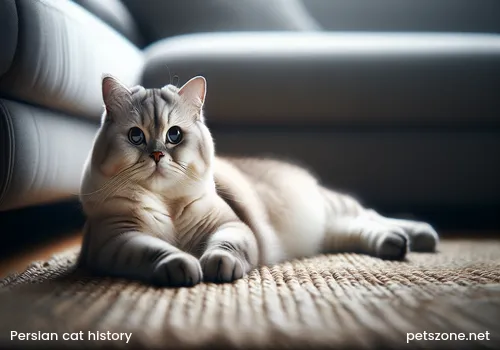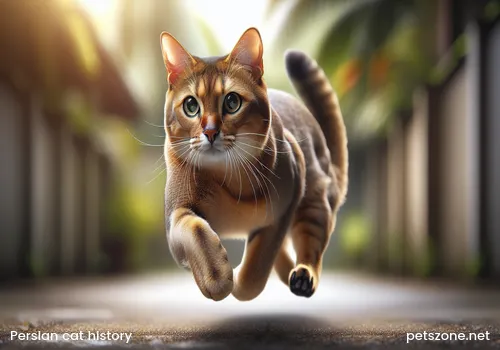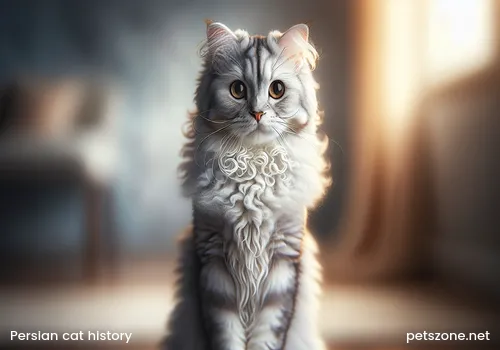Which Country Is the Persian Cat From (Historical Origin)
The historical origin of the Persian cat seems mainly associated with Persia (modern Iran). Research suggests it may have originated early in the Middle East region, especially Iran.
Although modern genetic studies show that Persian cats are closely related to European cat breeds, their name and historical records point to Persia as their native land.
There is some controversy about the origin; some sources mention that Afghanistan or Turkey might also be involved, but the evidence leans more toward Iran.

Persian cats, known for their gorgeous long fur and elegant temperament, have become one of the most popular cat breeds worldwide. Especially in China, more and more families regard them as the “little emperor at home,” not only because of their appearance but also because of their long history and cultural symbolism. This article will explore the origin country and historical evolution of the Persian cat, combining reliable sources to present a comprehensive perspective to readers.
Definition and Cultural Significance of the Persian Cat

The Persian cat is famous for its long silky fur, round face, and small nose. Its name directly comes from Persia (modern Iran), reflecting its historical background. In Chinese culture, cats are often regarded as "lucky cats," and Persian cats, due to their noble appearance, symbolizing "luxurious wealth," are favored by middle-class families. Especially in cities, owning a Persian cat is considered a “face project,” with prices ranging from thousands to tens of thousands of RMB, making them “the aristocrats among cats.”
Historical Origin: The Imprint of Persia and the Middle East
The origin of the Persian cat can be traced back to ancient Persia, specifically modern Iran. Research shows its history may span thousands of years; as early as 1684 BC, hieroglyphics depict similar long-haired cats, suggesting the Persian cat likely originated in the desert environment of the Middle East and adapted to local climate conditions. The Persian Empire once covered Iran, Turkey, and other regions, and Persian cats were treasures of royalty and nobility, symbolizing wealth and status.
Some sources mention that Persian cats might not be limited to Iran; some long-haired cats possibly came from Afghanistan or Turkey’s trade routes. For example, records from 1885 show that long-haired cats from Afghanistan were transported to India via camel caravans, implying that cat trade in the Middle East may have played a role in the spread of Persian cats. However, the evidence more strongly supports Persia (Iran) as their primary origin, especially in 17th-century European import records, where Iran is repeatedly mentioned.
Introduction to Europe: 17th Century "Cat Diplomacy"

The Persian cat’s journey to Europe began in the 17th century when Italian traveler Pietro della Valle brought long-haired cats from the Khorasan region of Iran around 1620. This act is considered the starting point of Persian cats entering Europe. His records describe these cats’ gray long fur in detail, emphasizing how they differed from the then-existing European long-haired cats (such as the Turkish Angora cat). At the same time, French scholar Nicolas-Claude Fabri de Peiresc also introduced long-haired cats from Damascus, Syria, further enriching European cat breeds.
These cats quickly became popular in Europe, especially in Britain, France, and Italy, where the aristocracy competed to collect them. The elegant image of Persian cats became a highlight at cat shows. In 1871, the first cat show was held at London’s Crystal Palace, where Persian cats were the focus and won the “Best Display” award, marking their formal status in Europe.
Modern Breeding and Genetic Research
Through breeding in Europe, Persian cats crossed with breeds like the Angora cat, gradually forming today’s short-nosed, round-faced traits. By the late 19th century, Persian cats were introduced to the United States and became popular stars at cat shows, beloved by cat enthusiasts. Modern genetic studies show Persian cats’ DNA is closer to European breeds such as the British Shorthair, Chartreux, and American Shorthair. This may be due to long-term European breeding. Studies point out that “although early Persian cats likely originated in Persia, modern Persian cats have lost their geographical genetic traits.”
Nevertheless, the name and historical records of the Persian cat clearly point to Iran as its native land. Some controversies exist; for instance, some sources mention Afghanistan or Turkey’s involvement, but the mainstream view recognizes Iran as the main origin. This controversy reflects the complexity of cat trade, and cultural exchanges in the Middle East may have blurred the cats’ origins.
Data and Visualization
The following table summarizes the key timeline and related regions of Persian cat origins:
Persian Cats in China: Culture and Reality
In China, Persian cats are deeply loved for their noble appearance and gentle nature. Especially in urban families, owning a Persian cat may cost thousands to tens of thousands of RMB, making them “the aristocrats among cats.” Their long fur requires daily grooming. Especially in winter, when the indoor temperature is maintained at 20-25 degrees Celsius, their fur appears even fluffier, as if “wearing a mink coat.” Some netizens jokingly say that raising Persian cats “is more demanding than raising children,” yet their “cool elegance” is irresistible.
Frequently Asked Questions
Below are some common questions about the origin of Persian cats:
- Q: Do Persian cats really originate from Iran?
A: Yes, research shows the Persian cat’s historical origin is closely related to Iran (ancient Persia), although modern genetic studies show their genes are closer to European breeds. - Q: Why is the name of the Persian cat "Persian"?
A: Because its earliest records and importation are associated with the Persian region; the name reflects its historical origin. - Q: Why do Persian cats have such long fur?
A: It may be a natural adaptation to the Middle Eastern desert environment; the long dense fur helps them withstand the hot, dry climate.
References
- Persian cat - Wikipedia, Persian cat detailed history
- Persian Cat: Breed Profile, Characteristics & Care, Persian cat care and history
- Persian Cat Facts: History, Personality, and Care, ASPCA Persian cat facts
- History of the Persian Cat ~ Pelaqita Persians, Detailed Persian cat history
- 10 Fascinating Facts About Persian Cats | All About Cats, Interesting Persian cat facts
- Traditional Persian - Wikipedia, Traditional Persian cat details
- :: CFA Persian Breed Council - Persian History, Part 1 ::, CFA Persian history
- Persian Cats | Encyclopedia.com, Encyclopedia on Persian cats
- Persian Cat Breed Guide: Facts, History & Health, Trupanion Persian cat guide
- Persian Cat Breed Information: Pet Profile | Dutch, Dutch Persian cat profile
-560x560.webp)

-560x560.webp)


